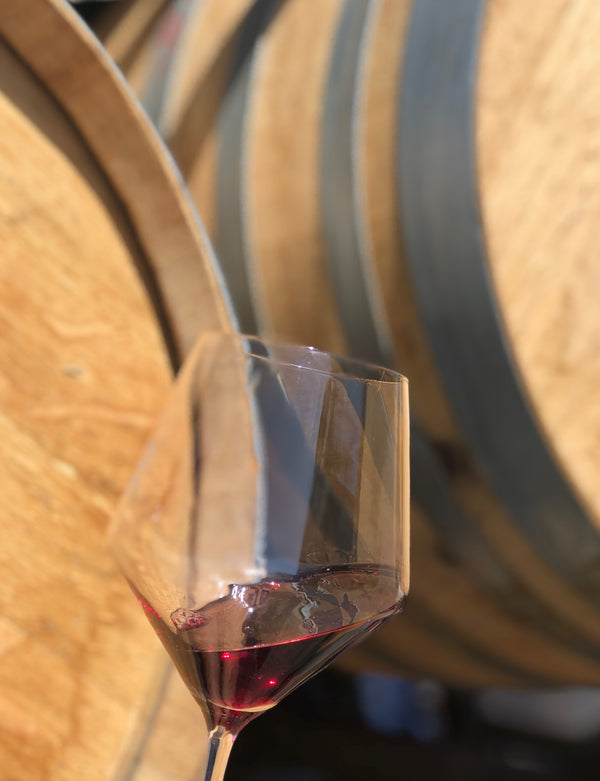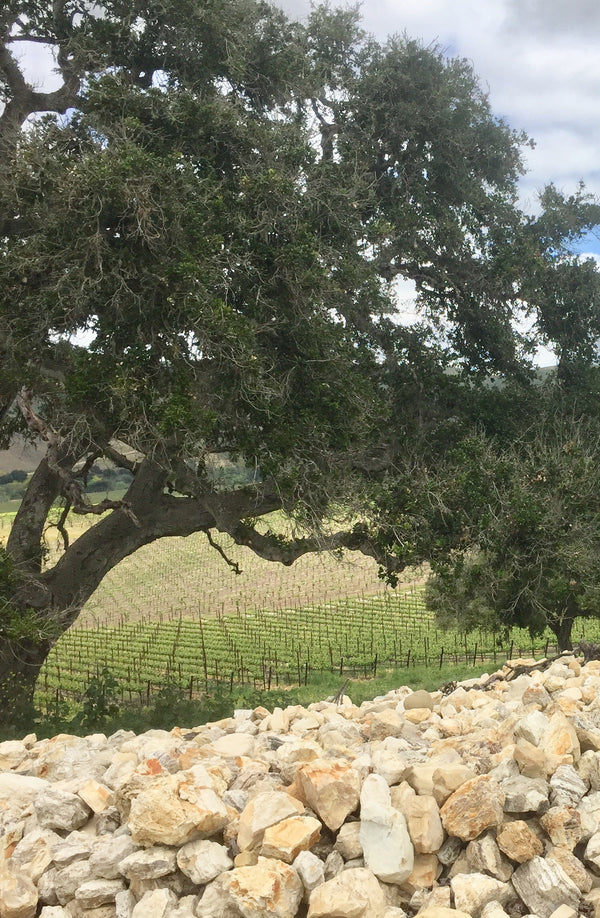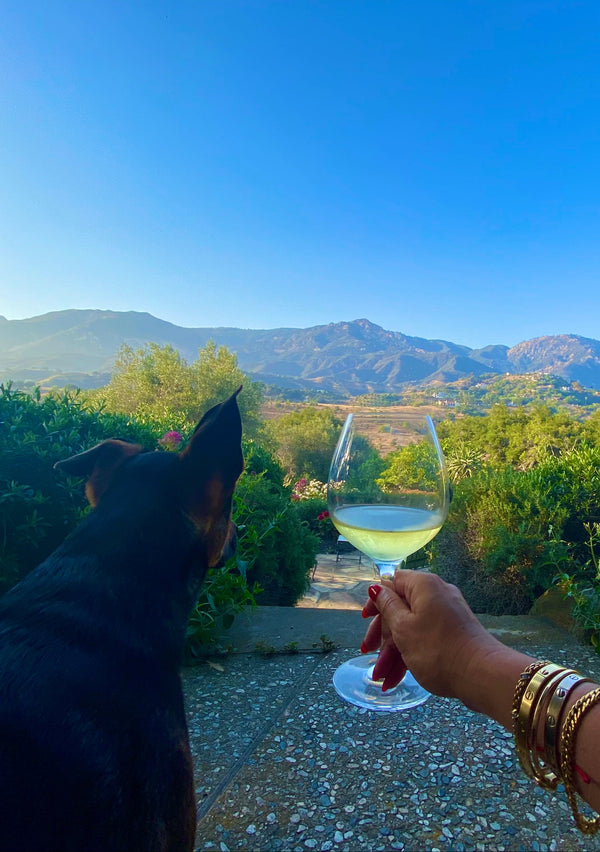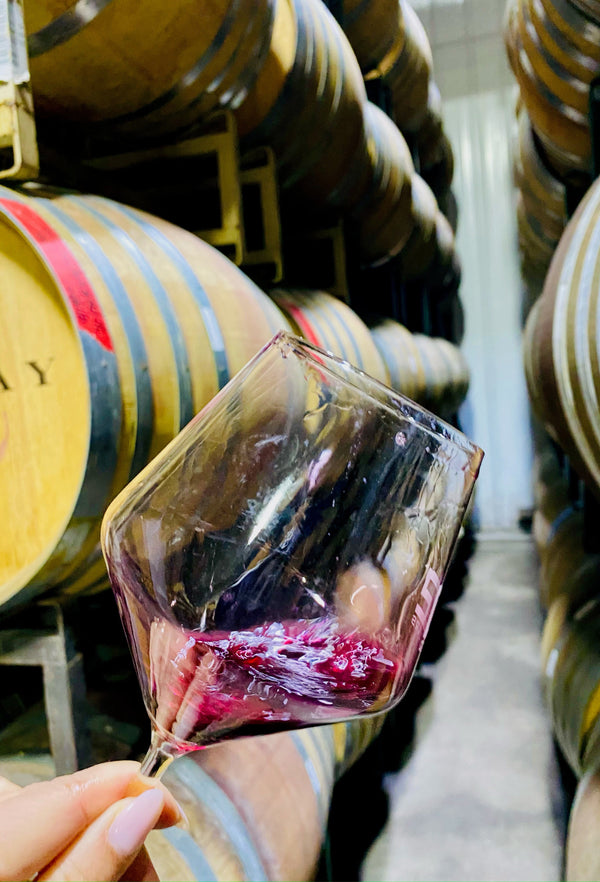Winemaker's Notes
-

Greetings again from the wilds of Santa Barbara County.
February 21, 2025
The vines are awakening after their winter slumber, getting ready to go back to work producing their annual and unique stamp of authenticity we call a vintage. Great sites and superlative farming are a must, but so is luck and serendipity. As long as grapes are grown and wine is made by human beings as a noble pursuit, representing a time, place, and a point of view, we will have wines with stories to tell. May their tales be beautiful and long lasting.
We are presenting our wines from 2021 and an entrée into 2022. These vintages were dramatically different but the resulting wines from both vintages are simpatico. We hope you enjoy them.
Cheers!
Jeff

2022 HARVEST
Compared to 2021, the 2022 harvest was shorter, warmer and required precise picking windows.
We have only bottled one 2022, the Drum Canyon Pinot Noir and it is majestic but takes some time to unfold in the glass. We will be bottling the rest of the vintage in early spring 2025.
The other cuvees will be fruitful wines without the prominent structure found in the 2021 wines – Drum Canyon being the exception. The challenge with the 2022 is the overt fruit character which needs careful sculpting and delineation through the blending and assemblage process. As I like to say, sometimes the fruit gets in the way of the wine.
More on this vintage later.
2022 HARVEST
Compared to 2021, the 2022 harvest was shorter, warmer and required precise picking windows.
We have only bottled one 2022, the Drum Canyon Pinot Noir and it is majestic but takes some time to unfold in the glass. We will be bottling the rest of the vintage in early spring 2025.
The other cuvees will be fruitful wines without the prominent structure found in the 2021 wines – Drum Canyon being the exception. The challenge with the 2022 is the overt fruit character which needs careful sculpting and delineation through the blending and assemblage process. As I like to say, sometimes the fruit gets in the way of the wine.
More on this vintage later.
2021 HARVEST
As vintages go, 2021 was rather uneventful- in a good way. The danger, though, of a vintage like this is complacency.
As ripening moved steadily along and we picked our Pinot Noir from the first week of September to the last, vigilance was still required to avoid the stealthy foe of over-ripeness – one of my personal deal breakers.
Fortunately, our fruit was plump, balanced and damage -free so we decided to use a bit more stem inclusion for aromatics and structure.
In the fermenter the wines soaked up to an astounding magenta color. Glowing! Signs of healthy must. Fermentations were indigenous - both primary and malo - nothing else added except a small dose of SO2 after the fruit was processed.
The early wines were outstanding, with mesmerizing color and lifted aromatics. This continued through 2022. In early 2023 however, the Pinot took a long nap. Barrel after barrel shut down aromatically as well as on the palate.
In all my years, I had experienced a barrel or two here and there but never the entire vintage. Anguish and questioning for months. Did we use too much whole cluster? Tests for brett – all negative. In fact, no analysis showed any indication of a problem.
I called my dear friend in Burgundy, Veronique Drouhin, to see if she could shed any light -she was very supportive and said they would probably come around – which thankfully they did in early 2024!. Crazy, but in the wine world patience is truly a virtue. The wine is always, ultimately, in control of its own destiny and trajectory. Our job is to help it be what it wants to be.
Still don’t know what happened but the 2021 reds are marvelous now – full, balanced, complex and aromatic. The only sign of the long slumber is in the finish – firm but silky – a good sign for the road ahead.

2021 HARVEST
As vintages go, 2021 was rather uneventful- in a good way. The danger, though, of a vintage like this is complacency.
As ripening moved steadily along and we picked our Pinot Noir from the first week of September to the last, vigilance was still required to avoid the stealthy foe of over-ripeness – one of my personal deal breakers.
Fortunately, our fruit was plump, balanced and damage -free so we decided to use a bit more stem inclusion for aromatics and structure.
In the fermenter the wines soaked up to an astounding magenta color. Glowing! Signs of healthy must. Fermentations were indigenous - both primary and malo - nothing else added except a small dose of SO2 after the fruit was processed.
The early wines were outstanding, with mesmerizing color and lifted aromatics. This continued through 2022. In early 2023 however, the Pinot took a long nap. Barrel after barrel shut down aromatically as well as on the palate.
In all my years, I had experienced a barrel or two here and there but never the entire vintage. Anguish and questioning for months. Did we use too much whole cluster? Tests for brett – all negative. In fact, no analysis showed any indication of a problem.
I called my dear friend in Burgundy, Veronique Drouhin, to see if she could shed any light -she was very supportive and said they would probably come around – which thankfully they did in early 2024!. Crazy, but in the wine world patience is truly a virtue. The wine is always, ultimately, in control of its own destiny and trajectory. Our job is to help it be what it wants to be.
Still don’t know what happened but the 2021 reds are marvelous now – full, balanced, complex and aromatic. The only sign of the long slumber is in the finish – firm but silky – a good sign for the road ahead.

2017 HARVEST
Today, as we project 2021 Pinot Noir harvest dates to start mid-September, our review of harvest dates in 2017 paints a much different picture. Our 2017 Pinot harvest began in the Santa Rita Hills on August 28 and was completed by September 5. It had been such a warm summer and it continued unabated into harvest. There had been a ferocious heat wave predicted, the Pinot was ready, we made the call to pick. The dreaded heat wave arrived around September 9, the day we pulled the first of our Chardonnay from the Sierra Madre Vineyard in the Santa Maria Valley. Temperatures rocketed, from 105 to 110 degrees for 3 to 4 days. When air temperatures stay that high for more than 24 hours, the vines react and go into protection mode. The stomata on the leaves close so that the vines can conserve moisture. Photosynthesis shuts down thus so does ripening. What can happen is that the clusters shrivel as the juice in the berries evaporates. Yes, flavors can concentrate, but acidities usually also transpire leading to potentially flabby over-ripe flavors.
In 2017 the Pinot missed the worst of the heat but not so for the Chardonnay. On September 9, our first pick of the Sierra Madre Chardonnay registered at 21.4 brix or a potential alcohol of 12.5%. We let the vines ride out the heat, monitored the sugar and acid, then after everything cooled down, we waited for the vines to recover and fire back up. Twelve days later on September 21, we made the call to pick the rest of our block of Sierra Madre Chardonnay. The Brix level was 21.4! Clusters were miraculously plump and intact, but the vines had done their job for the year. Any further sugar accumulation or flavor development would only happen by shrivel, evaporation and loss of acidity. We opted for freshness.
2017 HARVEST
Today, as we project 2021 Pinot Noir harvest dates to start mid-September, our review of harvest dates in 2017 paints a much different picture. Our 2017 Pinot harvest began in the Santa Rita Hills on August 28 and was completed by September 5. It had been such a warm summer and it continued unabated into harvest. There had been a ferocious heat wave predicted, the Pinot was ready, we made the call to pick. The dreaded heat wave arrived around September 9, the day we pulled the first of our Chardonnay from the Sierra Madre Vineyard in the Santa Maria Valley. Temperatures rocketed, from 105 to 110 degrees for 3 to 4 days. When air temperatures stay that high for more than 24 hours, the vines react and go into protection mode. The stomata on the leaves close so that the vines can conserve moisture. Photosynthesis shuts down thus so does ripening. What can happen is that the clusters shrivel as the juice in the berries evaporates. Yes, flavors can concentrate, but acidities usually also transpire leading to potentially flabby over-ripe flavors.
In 2017 the Pinot missed the worst of the heat but not so for the Chardonnay. On September 9, our first pick of the Sierra Madre Chardonnay registered at 21.4 brix or a potential alcohol of 12.5%. We let the vines ride out the heat, monitored the sugar and acid, then after everything cooled down, we waited for the vines to recover and fire back up. Twelve days later on September 21, we made the call to pick the rest of our block of Sierra Madre Chardonnay. The Brix level was 21.4! Clusters were miraculously plump and intact, but the vines had done their job for the year. Any further sugar accumulation or flavor development would only happen by shrivel, evaporation and loss of acidity. We opted for freshness.
2017 WINES
The inaugural vintage of Aether was 2013. Although I personally had twenty one prior vintages, this new beginning was and still is an amazing chance to continue the exploration, development and understanding of this fantastic world of wine.
How do we make “better” wines? Wines that let themselves be what they are, what they want to be by varietal, vineyard, vintage How do we make wines that speak clearly without the undue burden of oak and over-ripeness?
In all candor in a former lifetime, I made wines from incredible vineyards and beautiful fruit that often showed their full ripe character, which we then buttressed with expensive new oak barrels beautifully crafted by artisan French coopers. These wines were popular and delicious and many have held up amazingly well. Those were wines of their time, fashionable wines but somehow not the classic flavors that I love and admire in the wines from our friends in Burgundy.
Yes, the French are a gastronomic culture that we can learn much from. Recipes and techniques for the dining table are available from cookbooks. With wine not so much. Winegrowing and winemaking are always a moving target. It starts with seasonal variation, crop load, weather, and the ever present intangibles. Couple this with the evolution of the finished product in the bottle. A wines’ journey through life is metaphorically parallel to the arc of our own lives. Whew, big responsibility. Set the wheels in motion and set each wine free to chart its own course.
How do we achieve wine nirvana with that perfect moment of equilibrium and ecstasy that a great wine experience gives? We are working on it! In the meantime, fresh flavors, delicious fruit supported by a cast of tannin and acidity with no new oak for the Pinot and longer barrel aging when possible works. Native fermentation, when conditions allow, on primary and malo for both Pinot and Chardonnay. For Pinot, free run and press wine kept separate until assemblage. Some whole clusters for aromas and texture. Not that hard, right? Most important is intuition and of course honing your palate to the precision and creative artistry of a sushi master.
The journey continues.
– Jeff Fink, Winemaker

2017 WINES
The inaugural vintage of Aether was 2013. Although I personally had twenty one prior vintages, this new beginning was and still is an amazing chance to continue the exploration, development and understanding of this fantastic world of wine.
How do we make “better” wines? Wines that let themselves be what they are, what they want to be by varietal, vineyard, vintage How do we make wines that speak clearly without the undue burden of oak and over-ripeness?
In all candor in a former lifetime, I made wines from incredible vineyards and beautiful fruit that often showed their full ripe character, which we then buttressed with expensive new oak barrels beautifully crafted by artisan French coopers. These wines were popular and delicious and many have held up amazingly well. Those were wines of their time, fashionable wines but somehow not the classic flavors that I love and admire in the wines from our friends in Burgundy.
Yes, the French are a gastronomic culture that we can learn much from. Recipes and techniques for the dining table are available from cookbooks. With wine not so much. Winegrowing and winemaking are always a moving target. It starts with seasonal variation, crop load, weather, and the ever present intangibles. Couple this with the evolution of the finished product in the bottle. A wines’ journey through life is metaphorically parallel to the arc of our own lives. Whew, big responsibility. Set the wheels in motion and set each wine free to chart its own course.
How do we achieve wine nirvana with that perfect moment of equilibrium and ecstasy that a great wine experience gives? We are working on it! In the meantime, fresh flavors, delicious fruit supported by a cast of tannin and acidity with no new oak for the Pinot and longer barrel aging when possible works. Native fermentation, when conditions allow, on primary and malo for both Pinot and Chardonnay. For Pinot, free run and press wine kept separate until assemblage. Some whole clusters for aromas and texture. Not that hard, right? Most important is intuition and of course honing your palate to the precision and creative artistry of a sushi master.
The journey continues.
– Jeff Fink, Winemaker





